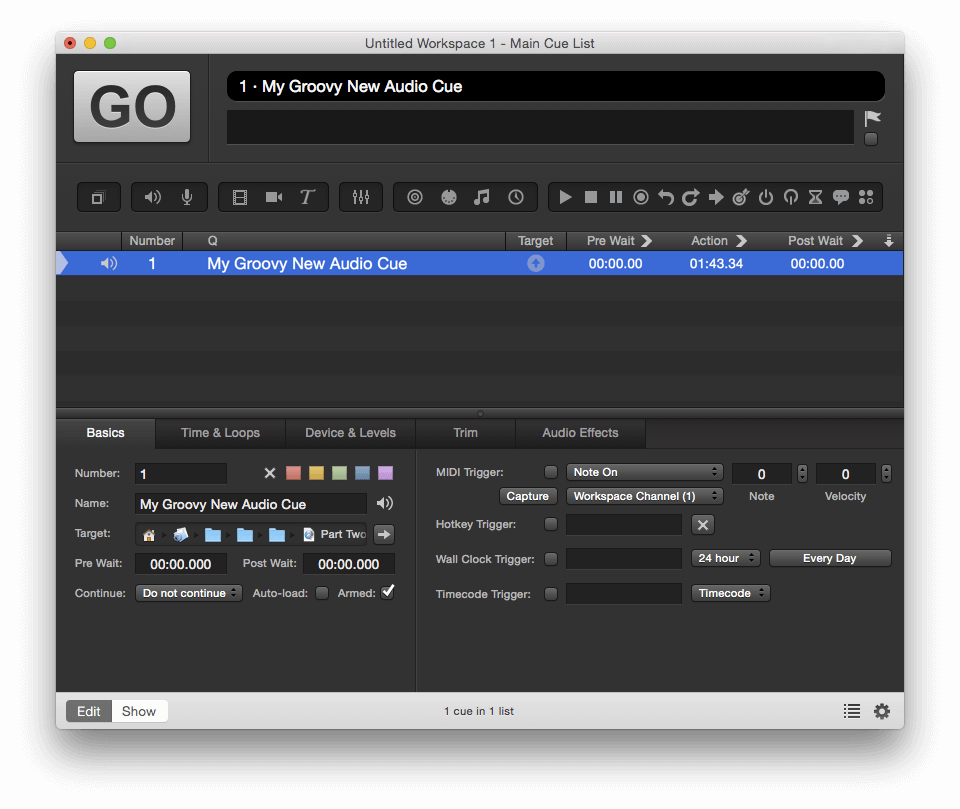
In this example, the cue is numbered “4”, but the same thing works with any cue that has a cue number.

QLAB FADE COLOR HOW TO
The following AppleScript and OSC examples show how to disarm a specific cue. QLab always ignores OSC messages when they’re inapplicable, so AppleScript’s concept of “try” is unnecessary. 0/0 represents the row and column of the crosspoint that should be adjusted, which in this case is row 0, column 0.Īnd finally -10 is the value that gets sent. level says that the value we’re sending ( -10 in this case) should be used to adjust the audio level. cue/selected directs the OSC message to all selected cues.

The OSC solution to this problem is rather simpler it’s just a single command: theCue is the variable which represents each item in the list of selected cues, row 0 is the main output row of the audio levels matrix mixer, column 0 is the main input column of the audio levels matrix mixer, and db -10 states the level that you want to set. SetLevel is a QLab-specific AppleScript command which sets the level of the specified matrix crosspoint in the specified cue. We want to be able to select a bunch of cues and run the script without worrying about whether every single cue is appropriate if we select five Audio cues and one Memo cue, the script should adjust the Audio cues and ignore the Memo cue. This allows the script to handle a case wherein some of the selected cues don’t have audio levels. Just skip over the rest of this block and then keep running.

QLAB FADE COLOR CODE
Try starts yet another block of code with a special condition: if, for some reason, the code inside this block doesn’t work for a particular iteration of theCue, don’t stop running the script. in (selected of front workspace as list) sets up the details of the condition: find all of the cues in the front workspace which are selected, make a list of those cues, and then repeat the following code once for each item in the list, replacing theCue with each successive item. theCue creates this variable, which is just a blank container waiting to be used. Repeat starts another block of code which will be repeated until a particular condition is met, and with indicates that the condition has to do with a variable. 5 is how you instruct the AppleScript interpreter to send the contents of this block of code to QLab 5. Tell is how AppleScript starts a block of code. TheCue setLevel row 0 column 0 db - 10 end try end repeat end tell Tell application id ".5" repeat with theCue in (selected of front workspace as list ) try You could easily replace -10 with some other number, but remember that you always need to explicitly specify whether a level is positive or negative when using AppleScript or OSC. The following AppleScript and OSC examples both set the main level of all selected cues to -10 dB. The OSC examples can be run from a Network cue or sent from another program or device. The AppleScript examples here can be run from within a Script cue or from another application such as Script Editor. Remember, too, that there is usually more than one way to get something done, and the examples here are not meant to be authoritatively the “right” or even “best” way to do things. Remember, you can always write to and send us your script-in-progress, and we’ll do our best to get you going. What follows here is a collection of annotated examples to help get you started.

While having a list of available OSC and AppleScript commands is all well and good, it can sometimes be difficult to put the pieces together into something complete and useful.


 0 kommentar(er)
0 kommentar(er)
